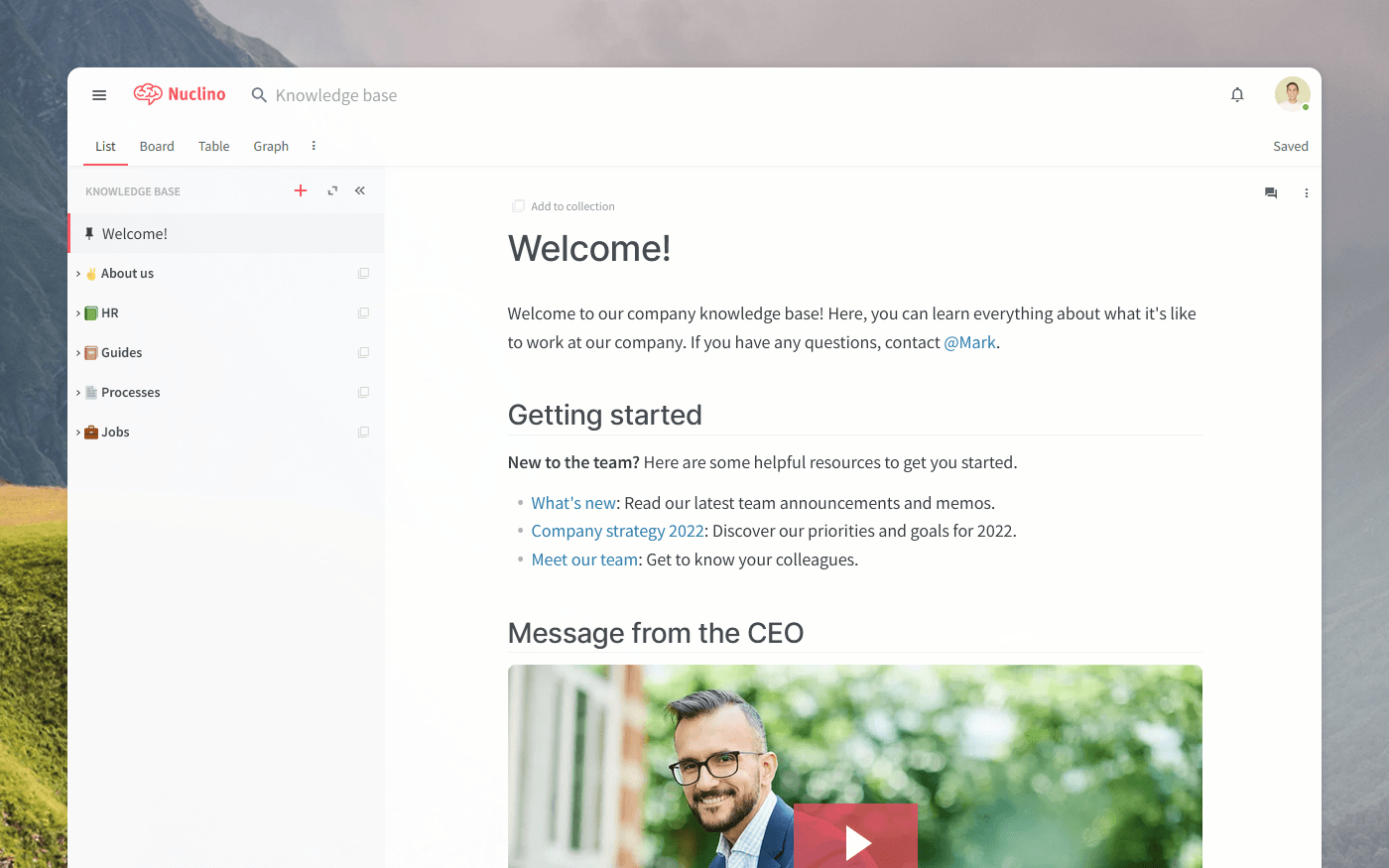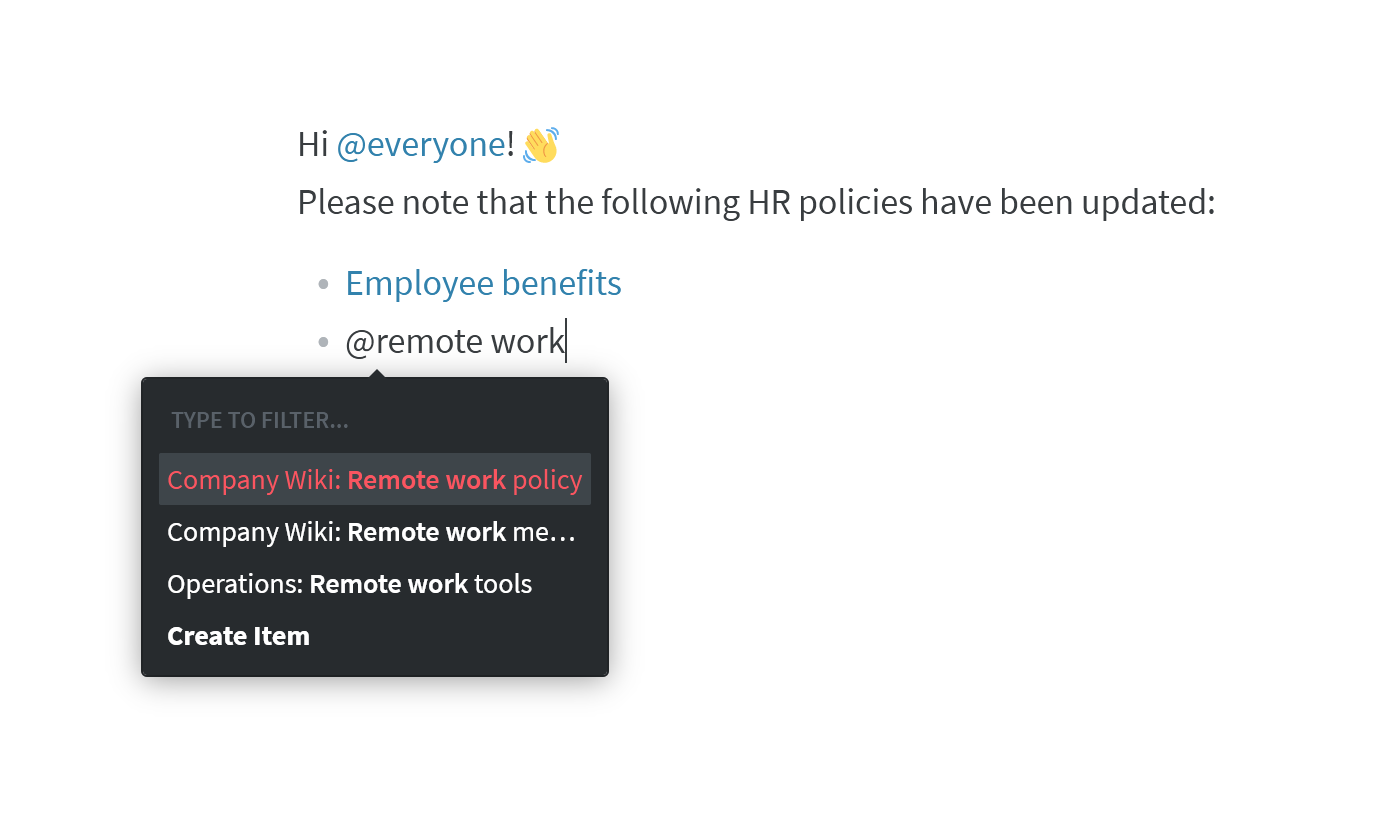What is a Knowledge Management Portal?
Learn how a knowledge management portal can help you improve the flow of knowledge within your company.
Every business process is powered by specialized knowledge, and in order to correctly execute their tasks, employees need to possess the relevant know-how. If this know-how remains undocumented, repetitive questions are inevitable. How do I troubleshoot this technical issue? What are our brand guidelines? How do I get this business expense approved?
A knowledge management portal is a tool designed to make sure your team has access to the information they need, when they need it, without having to tap on shoulders. In this article, we will dive deeper into what a knowledge management portal is and why every organization needs it.
- What is a knowledge management portal?
- Types of knowledge management portals
- Benefits of a great knowledge management portal
What is a knowledge management portal?
A knowledge management portal is a digital platform that helps you organize and share information within your organization. It is also often referred to as a knowledge management system, knowledge base software, or a knowledge sharing platform. It's meant to act as a single source of truth for your team, making sure your employees have access to the company knowledge they need. Having such a central knowledge repository is a core part of any organization's knowledge management strategy.
Below is an example of what a knowledge management portal may look like in Nuclino, a unified workspace where teams can bring all their knowledge, docs, and projects together.

A knowledge management portal can contain a wide variety of information, including:
Guides, manuals, and tutorials
Lessons learned and best practices
FAQs
Types of knowledge management portals
A knowledge management portal can take many forms. Depending on the size of your organization and the kind of information you need to share, some of these KM portal types may be a better fit for you than others.
Let's go over some of the most common knowledge management portal examples.
Wiki-style knowledge management portal
One of the most common ways to set up a knowledge management portal is to create it as a wiki. While the most well-known wiki is undoubtedly Wikipedia, many companies set up their own internal wikis to organize and share knowledge internally.
Wikis owe their popularity to their unique approach to organizing knowledge. Instead of disconnected docs in separate folders, a wiki allows you to link related pages together using internal links, making it easy to browse and discover new relevant information.

Wiki software is also very collaborative by design, making it easy for users to not just read, but also maintain the content. If you want to encourage members of your organization to contribute to your knowledge management portal, a wiki could be a great format for you.
Intranet-style knowledge management portal
Another popular way to set up a knowledge management portal is to use a company intranet. An intranet is an internal platform designed to help employees share information, communicate, and collaborate on documents, plans, and tasks. It works like an internal social media platform for your organization.
It's true that traditional corporate intranets have earned a bad rap in recent years. More often than not, they are slow, hard to navigate, full of outdated content, and just plain ugly.
But as more and more modern and user-friendly platforms enter the market every year, intranets are making a comeback. If you are planning to use an intranet as your knowledge management portal, make sure to choose the software carefully.
Document management platform
While general-purpose document sharing tools like Google Drive or Dropbox are not optimized for knowledge management, many smaller companies start with such a tool before eventually moving to a more advanced knowledge management portal.
Be aware that most typical document management tools have considerable limitations. It may be tempting to just stick with Google Drive if everybody on your team is already using it and is not too keen on picking up yet another tool, but a dedicated knowledge management portal can save you a lot of frustration down the road.
The benefits of a knowledge management portal
The main goal of setting up a knowledge management portal is to improve organizational efficiency and productivity by making relevant knowledge accessible to the employees who need it.
Without a central knowledge repository, internal company knowledge often ends up spread out across chat messages, archived email threads, and disconnected documents. As a result, finding the information you need becomes a challenge. Studies show that on average, employees spend 9.3 hours per week searching for information. That essentially means that if you had five employees, only four would show up to work. The fifth would be busy searching for answers, but not contributing any value.
A knowledge management portal is developed to prevent that from happening. A KM portal can facilitate knowledge sharing within your organization, which has numerous benefits:
Faster new employee onboarding
A well-maintained knowledge management portal gives your new hires access to all your internal company knowledge, minimizing repetitive questions and helping them ramp up productivity faster.
Knowledge retention
When knowledge is neatly documented in your knowledge management portal, it is preserved even when experienced employees leave.
Less time wasted
When your team members have a single source of truth, they won't have to spend time digging through their inbox or shared drive to find what they need.
Fewer repeated mistakes
When employees share their lessons learned with the team, they are less likely to repeat each other's mistakes.
All of this helps the organization foster innovation, boost employee productivity, and operate more efficiently overall.
It's true that setting up a knowledge management portal from scratch may require some considerable effort. But it's a worthwhile investment. After all, it has been estimated that Fortune 500 companies lose roughly $31.5 billion a year by failing to share knowledge — a knowledge management portal can not only make it easier for your employees to do their jobs but also cut your business costs in the long run.
Besides, if you choose a user-friendly solution that works out of the box and comes with a minimal learning curve, setting up a fully-functioning knowledge management portal can be easier than it seems.
Ready to get started?
